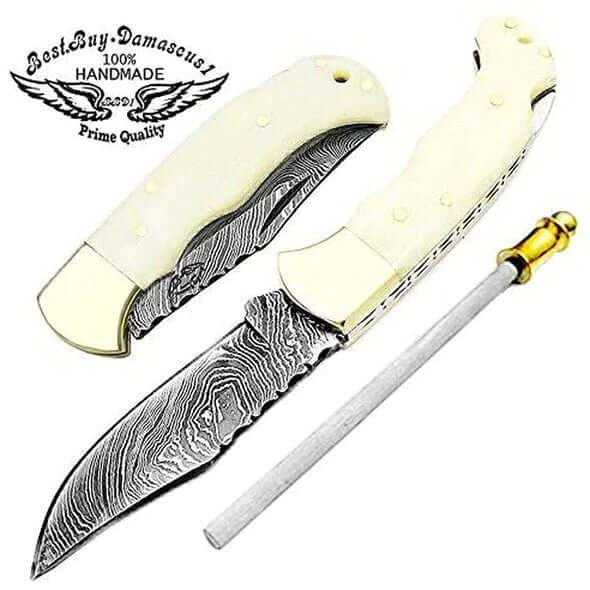Damascus fillet knives are not an ordinary type of knife, as they are often used by professional chefs and home cooks all over the world. So, make your chef stand out today by purchasing your own unique Damascus knife or, even better, a whole set of customised Damascus knives.
What Are Damascus Fillet Knives Used For?
A fish fillet knife is an indispensable knife for home or commercial use. It ranges in size from 13 to 23 centimetres (or 5 to 9 inches). The size of the Damascus fillet knife depends on the size of the fish you want to fillet. The fillet knife has a comfortable and tight handle and is a flexible knife, sometimes called a flex knife. The Damascus Flex Knife has a sharp, thin and flexible blade that allows you to fillet fish precisely.
Boning Knife Versus Filleting Knife
Our Damascus knives and Damascus fillet knives are produced using the same methods and quality steel.
Like Damascus fillet knives, Damascus boning knives offer sharp and flexible blades with durable, comfortable and non-porous handles. They are almost similar, but can you tell them apart?
The blades of boning knives can be divided into 2 main types:
Rigid Blades
These blades are sometimes shorter in height and range in size from 16.5 cm to 22.5 cm (or 6.5 inches to 9 inches). These knives are very sturdy and ideal for cutting tough meat such as beef, pork or lamb. These types of knives are also suitable for cutting and moving joints with a lot of connective tissue, such as pork shanks or beef shanks.
Semi-Flexible Boning Knife
In contrast, these knives range in size from 12.5 cm to 16.5 cm (or 5 inches to 6.5 inches). Compared to boning knives with rigid blades, semi-flexible boning knives have a slightly higher blade height, making them ideal for smaller and softer meats such as poultry and game birds.
What Is Damascus Steel?
Damascus steel was invented around 900 AD. The name may derive from the Arabic word 'Damas', meaning 'irrigated', or from the city of Damascus in Syria. Since then, Damascus steel has long been superior to other types of steel.
Damascus welded steel is made by layering iron and steel and hammering the metals together at high temperatures to form a welded joint.
Damascus steel can be recognized by its wavy or water-patterned design, which gives the knives a unique beauty that makes them impossible not to love. In addition, Damascus steel is strong, hard and flexible to make the perfect fillet knife.
The Advantages Of Damascus Fillet Knives
Every fish lover and true gourmet should know that Damascus fillet knives are best suited for cooking and cutting fish. Fillet knives are also excellent for separating meat from the bone, commonly known as filleting. In addition, Damascus steel fillet knives, which are very sharp, thin and flexible, will give you the perfect cut without damaging the delicate fish. So, whether it's cod, tuna or salmon, you must use a fillet knife without a doubt.
The best fillet knives made from Damascus steel will stay sharper for longer than the most common quality knives, and the sharp edge is easy to maintain. However, as patterned welded steel is usually quite hard, it is quite rare to see fillet knives made from it. As you should all know, a happy knife is a happy life.
If you need a new knife to add to your kitchen arsenal, we recommend you try out our various selections of Damascus knives.

